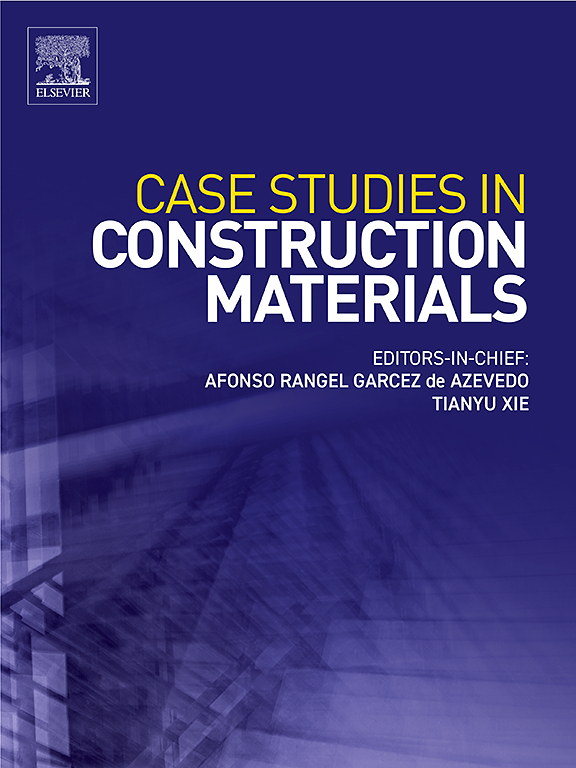A novel optimization design framework for mix proportion of mass concrete: A case study of foundation in super high-rise buildings
IF 6.6
2区 工程技术
Q1 CONSTRUCTION & BUILDING TECHNOLOGY
引用次数: 0
Abstract
To address thermal cracking in mass concrete structures, this study proposes an optimization framework for mix proportions to minimize the cement usage while ensuring the required concrete strength, using the foundation of Shenzhen CITIC Financial Center as a case study. Concrete components are grouped into three categories: (1) water and superplasticizer, (2) cement, fly ash, and slag, and (3) fine and coarse aggregates. Grey relational analysis (GRA) was applied to quantify correlations between compressive strengths (7-, 28-, and 60-day) and mix parameters. Experimental validation confirmed the optimal mix proportions. Key findings include: (1) superplasticizer reduces water demand by 10–15 % while enhancing strength; (2) fly ash exhibits comparable grey relational coefficients to cement in C50 concrete (0.78 vs. 0.80), enabling partial cement replacement (up to 30 %), whereas slag shows significantly lower coefficients (0.42); (3) for C50 concrete, fine and coarse aggregates have nearly identical impacts on strength (coefficients: 0.65 vs. 0.63), but their influence becomes less predictable for C45 concrete. The proposed GRA-based framework provides a systematic approach for optimizing mass concrete mixtures under limited trial data, balancing thermal and mechanical performance.
一种新型大体积混凝土配合比优化设计框架——以超高层建筑基础为例
为了解决大体积混凝土结构中的热裂缝问题,本研究以深圳中信金融中心基础为例,提出了一种优化的配合比框架,以最大限度地减少水泥使用量,同时保证所需的混凝土强度。混凝土成分分为三类:(1)水和高效减水剂;(2)水泥、粉煤灰和矿渣;(3)细骨料和粗骨料。应用灰色关联分析(GRA)量化抗压强度(7天、28天和60天)与混合参数之间的相关性。通过实验验证,确定了最佳配合比。主要发现包括:(1)高效减水剂在提高强度的同时,减少了10 - 15% %的需水量;(2)粉煤灰在C50混凝土中表现出与水泥相当的灰色关联系数(0.78 vs. 0.80),可以部分替代水泥(高达30 %),而矿渣的系数明显较低(0.42);(3)对于C50混凝土,细骨料和粗骨料对强度的影响几乎相同(系数:0.65 vs. 0.63),但对于C45混凝土,其影响难以预测。提出的基于gra的框架提供了一种系统的方法来优化有限试验数据下的大体积混凝土混合物,平衡热和机械性能。
本文章由计算机程序翻译,如有差异,请以英文原文为准。
求助全文
约1分钟内获得全文
求助全文
来源期刊

Case Studies in Construction Materials
Multiple-
CiteScore
7.60
自引率
19.40%
发文量
842
审稿时长
63 days
期刊介绍:
Case Studies in Construction Materials provides a forum for the rapid publication of short, structured Case Studies on construction materials. In addition, the journal also publishes related Short Communications, Full length research article and Comprehensive review papers (by invitation).
The journal will provide an essential compendium of case studies for practicing engineers, designers, researchers and other practitioners who are interested in all aspects construction materials. The journal will publish new and novel case studies, but will also provide a forum for the publication of high quality descriptions of classic construction material problems and solutions.
 求助内容:
求助内容: 应助结果提醒方式:
应助结果提醒方式:


